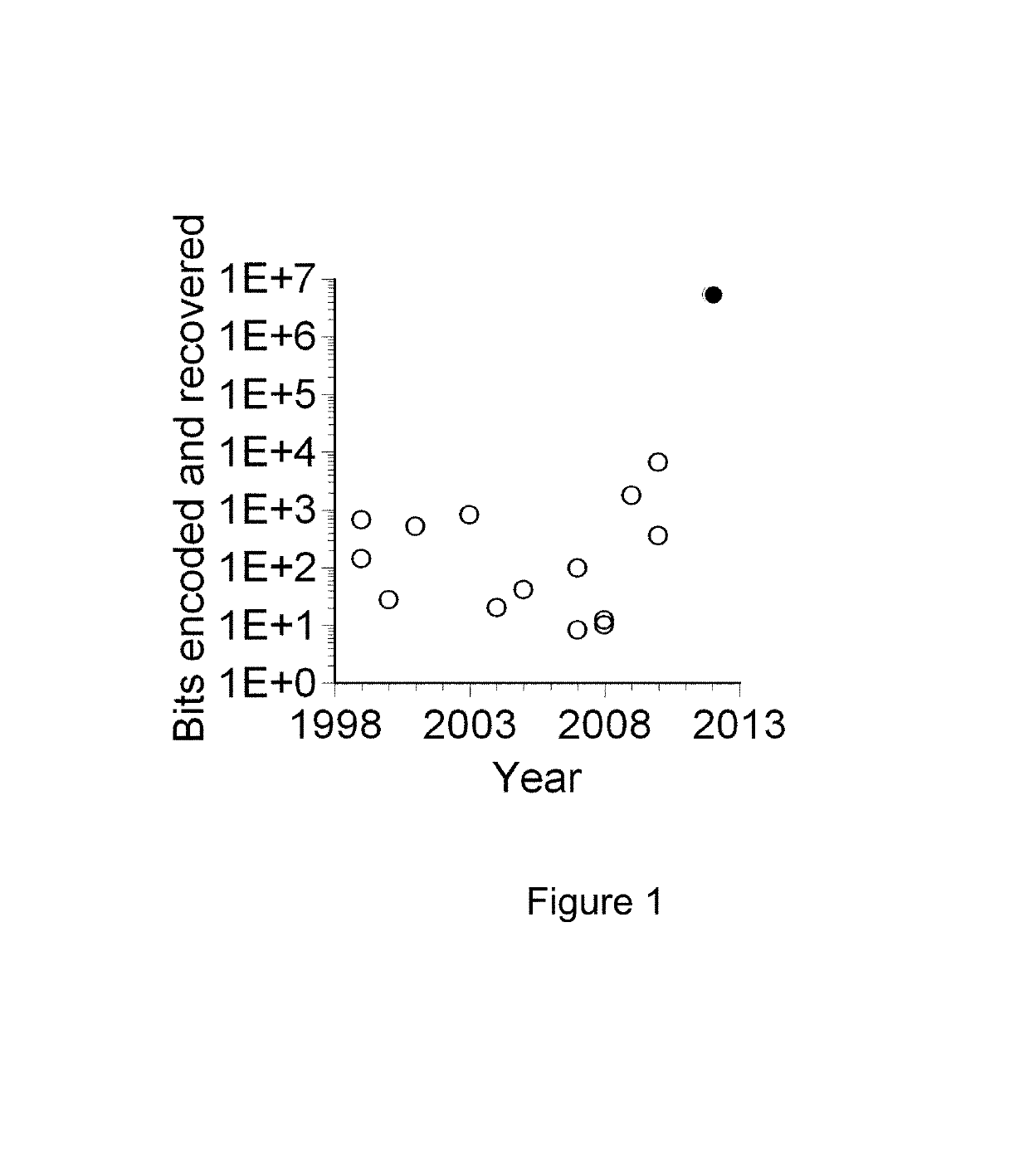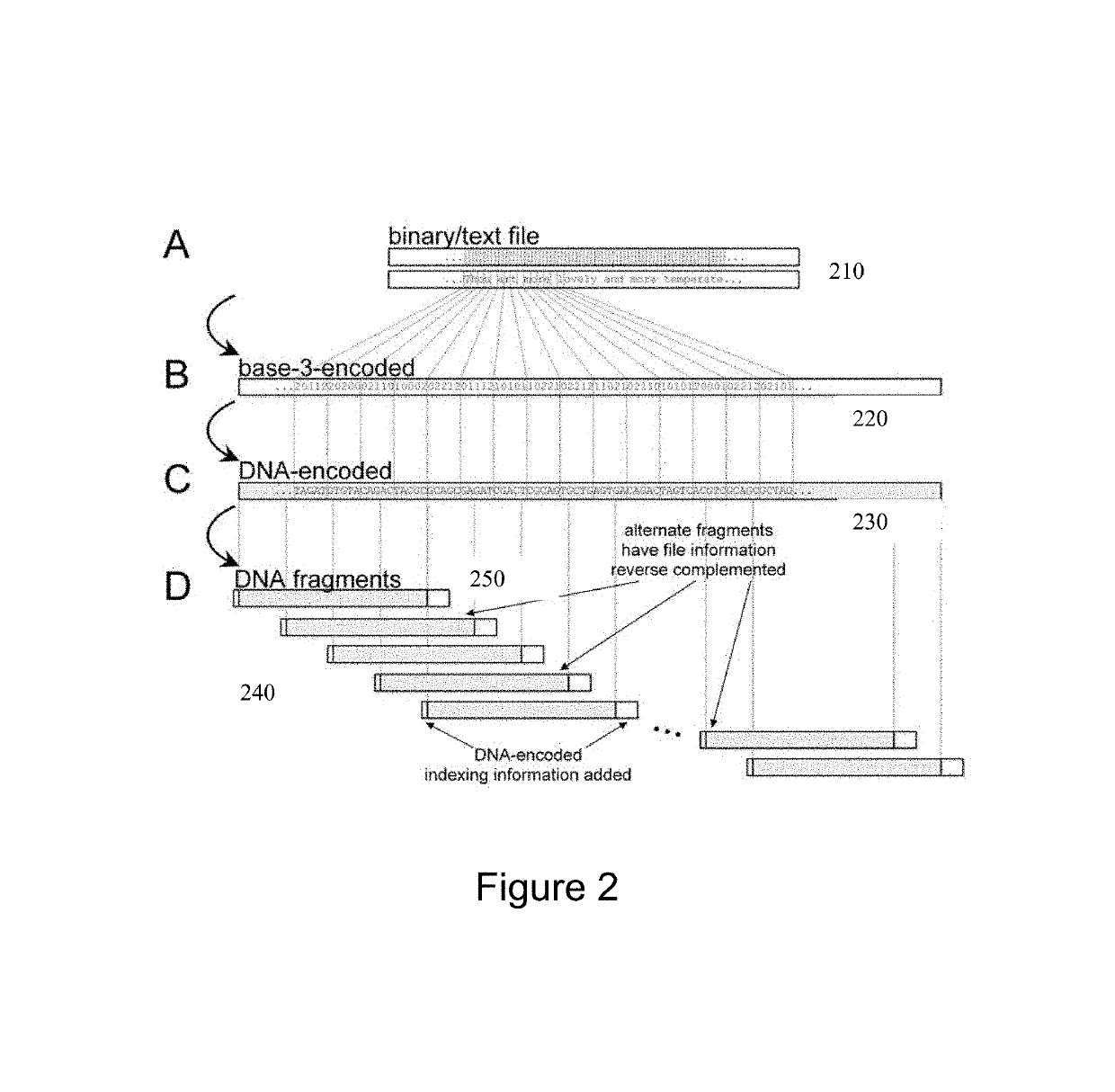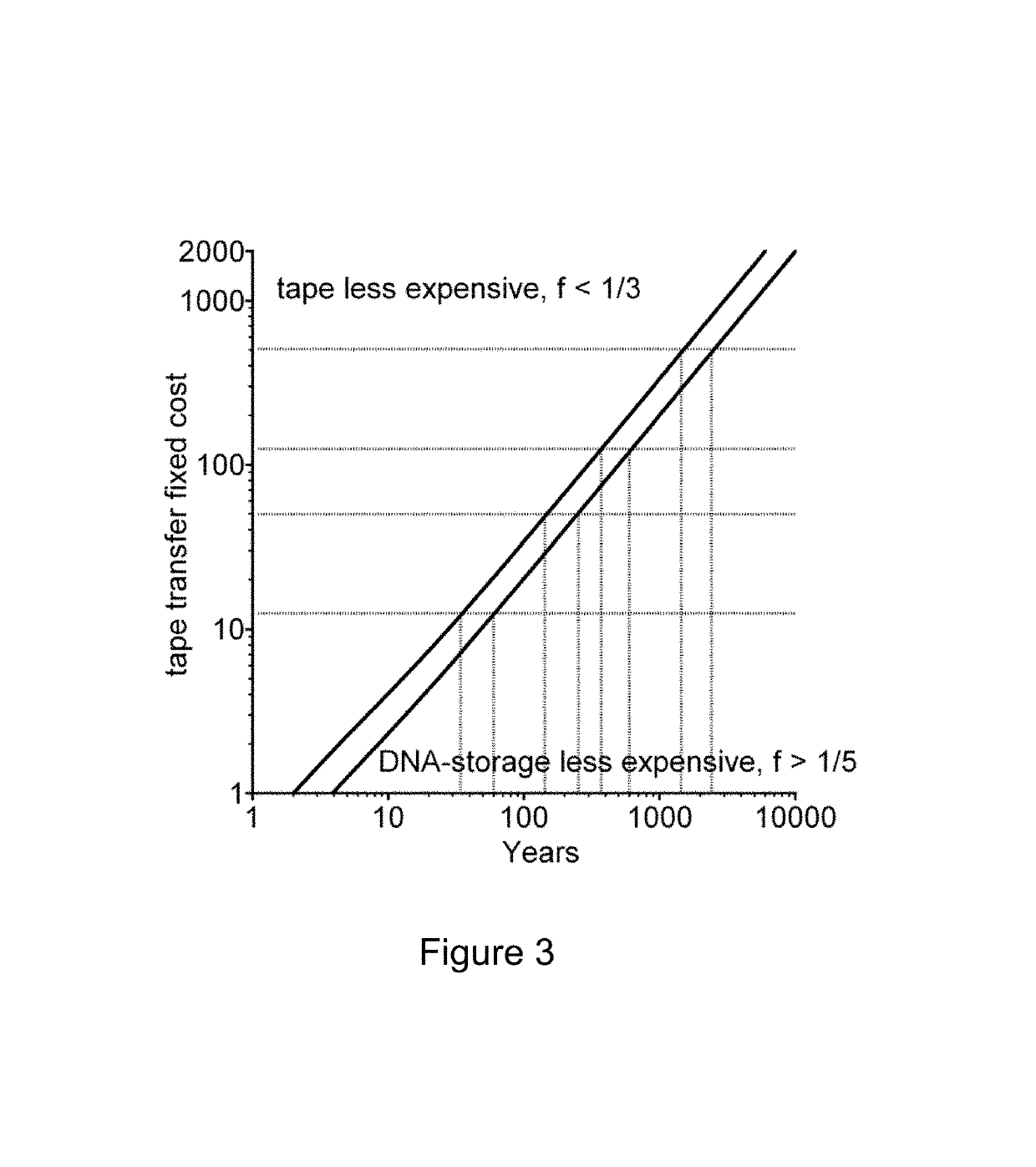High-capacity storage of digital information in DNA
a technology of digital information and high-capacity storage, applied in nanoinformatics, memory adressing/allocation/relocation, instruments, etc., can solve the problem of not being able to correctly reproduce the entire item of information
- Summary
- Abstract
- Description
- Claims
- Application Information
AI Technical Summary
Benefits of technology
Problems solved by technology
Method used
Image
Examples
Embodiment Construction
[0031]One of the main challenges for a practical implementation of DNA storage to date has been the difficulty of creating long sequences of DNA to a specified design. The long sequences of DNA are required to store large data files, such as long text items and videos. It is also preferable to use an encoding with a plurality of copies of each designed DNA. Such redundancy guards against both encoding and decoding errors, as will be explained below. It is not cost-efficient to use a system based on individual long DNA chains to encode each (potentially large) message. The inventors have developed a method that uses ‘indexing’ information associated with each one of the DNA segments to indicate the position of the DNA segment in a hypothetical longer DNA molecule that encodes the entire message.
[0032]The inventors used methods from code theory to enhance the recoverability of the encoded messages from the DNA segment, including forbidding DNA homopolymers (i.e. runs of more than one ...
PUM
 Login to View More
Login to View More Abstract
Description
Claims
Application Information
 Login to View More
Login to View More - R&D
- Intellectual Property
- Life Sciences
- Materials
- Tech Scout
- Unparalleled Data Quality
- Higher Quality Content
- 60% Fewer Hallucinations
Browse by: Latest US Patents, China's latest patents, Technical Efficacy Thesaurus, Application Domain, Technology Topic, Popular Technical Reports.
© 2025 PatSnap. All rights reserved.Legal|Privacy policy|Modern Slavery Act Transparency Statement|Sitemap|About US| Contact US: help@patsnap.com



